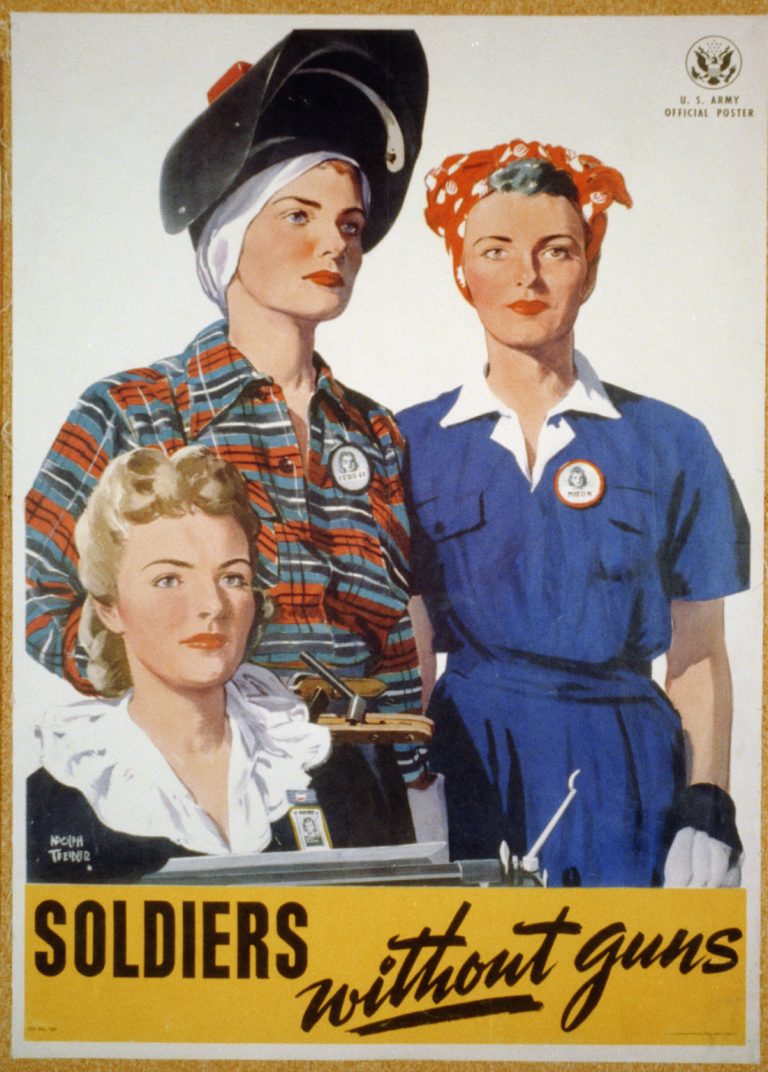
[ Back to Historical Fiction ] -> [ Back to Louisa June and the Nazis in the Waves ]
Winnie Welders and Liberty Ships
Louisa June and the Nazis in the Waves

During WWII, the U.S. government ordered the construction of 2,751 Liberty Ships. They could be assembled quickly because they were welded, rather than riveted. Seams between metal were actually “melted” together, rather than held by drilled holes filled with screw-like rivets that had to fit exactly and tightly to prevent water seeping in. Riveters had to be highly trained, but the technique of welding was more easily taught.
After a quick course, “Winnie the Welders” took their place alongside men, often working—because they were generally smaller—in the most tight, confined spaces in the ship hulls. Not the most prized or seen work, as my character Katie says, but in truth often the most important since the below-the-waterline hull is where leaks would occur if the welds were done poorly. One former “Winnie Welder” commented that it was just like sewing, putting together two pieces of material to hold securely, or doing embroidery, “tight and neat” and “making a beautiful pattern if you do it right.”
For many women, it was their first and only job outside the home. Most had to promise they would give it up when men returned from war. Even though these women welders wore pants and protective overalls to wield flame throwers, they were not allowed to go into diners near their plant or dock during lunch breaks so clad because it was “undignified to appear in public in slacks.” They also received instruction on how to scrub and then moisturize their faces properly, so their complexions remained “pleasing” despite the grit and smoky soot of welding.

Their hard work mattered. Fondly nicknamed the “ugly ducklings” of the fleet, Liberty Ships were also hailed as the “cargo-carrying key to Allied-victory.” Designed to carry ten tons of cargo—fuel, ammunition, K-rations, blankets, medicines, etc.—they often ended up carrying more. More than two-thirds of all cargo leaving the USA traveled aboard Liberty Ships. Many African American workers also found their first mainstream industrial jobs in the newly integrated shipyard assembly lines.
By 1943, when construction was at its peak, the average build-time was 30 days, at a cost of $1.5 to $1.8 million each. Over time, the process became streamlined—components were “prefabricated” across the United States and sent in sections via railroad flatcars to eighteen emergency shipyards across the nation (in cities like Jacksonville, Mobile, L.A., New Orleans, Baltimore, Portland, Sausalito, Houston, Vancouver, and Richmond). Most were built in shipyards owned by Henry J. Kaiser, who was best known for building the San Francisco-Oakland Bay Bridge and Hoover Dam.
Winnie Welders and Women during the War:
https://www.smithsonianmag.com/smithsonian-institution/rosie-riveter-gets-her-due-75-years-after-end-world-war-ii-180976474/
https://www.patriotledger.com/story/lifestyle/boomers/2009/05/06/winnie-welder-former-female/40345699007/
https://www.youtube.com/watch?v=nxDdVoiLHcg
https://www.uso.org/stories/118-women-of-world-war-ii
https://www.khanacademy.org/humanities/us-history/rise-to-world-power/us-wwii/a/american-women-and-world-war-ii
https://www.nationalww2museum.org/students-teachers/student-resources/research-starters/women-wwii
Liberty Ships:
https://www.nps.gov/articles/liberty-ships-and-victory-ships-america-s-lifeline-in-war-teaching-with-historic-places.htm
https://www.jaxhistory.org/liberty-ships/
https://mashable.com/feature/building-liberty-ships
http://www.usmm.org/peary.html
https://www.thoughtco.com/the-liberty-ship-program-2361030*
https://www.defensemedianetwork.com/stories/henry-j-kaiser-and-the-liberty-ships/
https://www.merchantsfabrication.com/cnc-machining-101-welding-vs-riveting/
